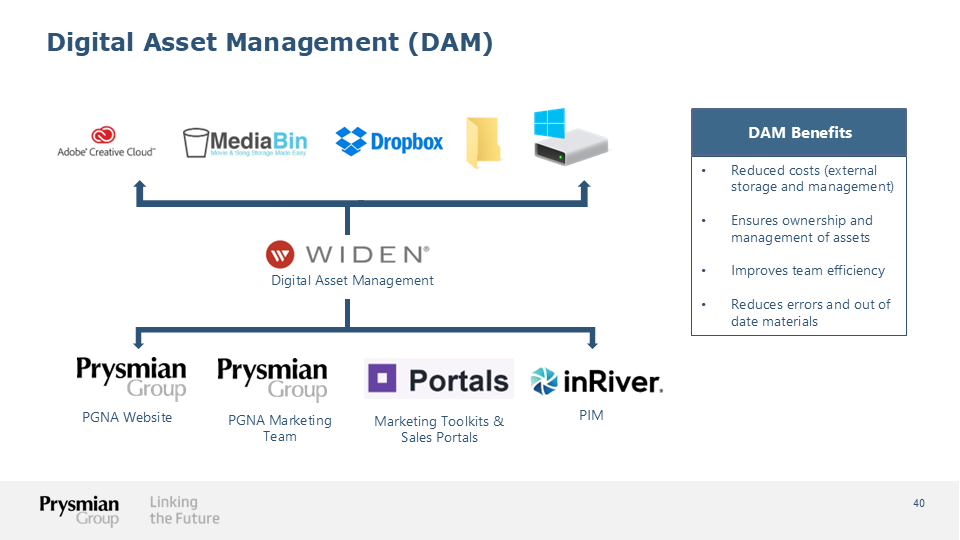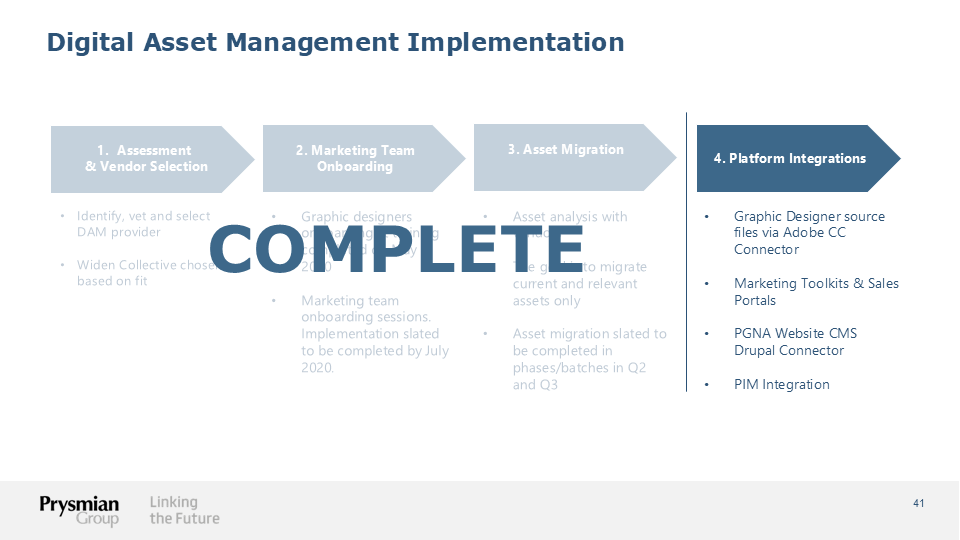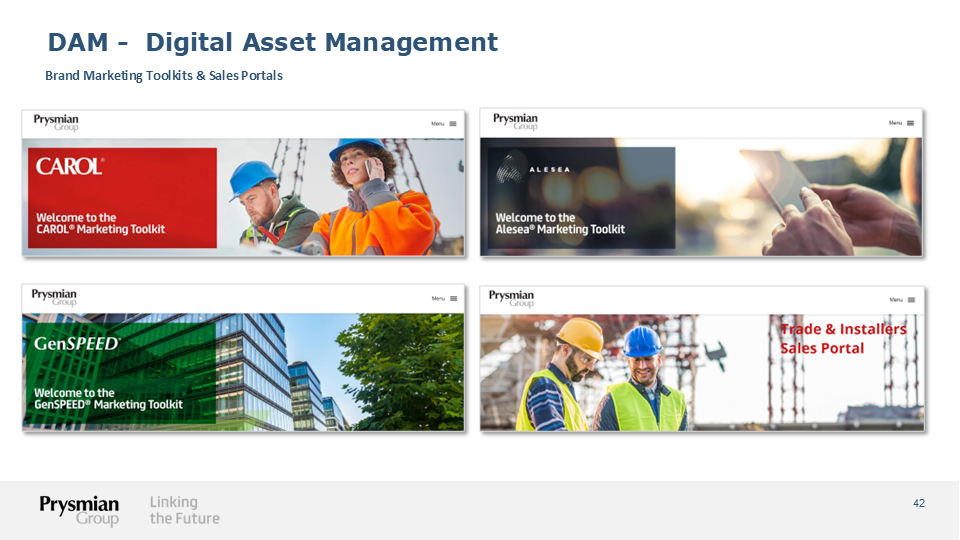Project: Digital Asset Management Transformation
Challenge:
Following the acquisition of General Cable, Prysmian’s North America region expanded to 23 manufacturing plants, 6 R&D centers, and over 5,800 employees. As the organization scaled, so did its asset chaos—photos, videos, documents, and sales tools were fragmented across legacy platforms and siloed teams. There was no centralized system to store, retrieve, or manage digital content efficiently, especially with growing marketing, sales, and crisis communication needs.
Recognizing this gap, I championed the concept and development of a regional Digital Asset Management (DAM) platform—an initiative that originated from my own strategic assessment of our growing content challenges. At the same time, the global organization was preparing to roll out a new Product Information Management (PIM) system, designed to unify and enrich product data across markets. Without a well-integrated DAM, the region risked missing a critical opportunity to connect branded content with product data—creating barriers for sales teams, marketing campaigns, and channel partners.
Solution:
Leadership from Discovery to Rollout: Directed vendor evaluation, selection, and implementation—ultimately choosing Widen Collective for its enterprise scalability and seamless integration potential with PIM systems like inRiver.
Cross-Functional Alignment: Facilitated a multi-day Foundations Workshop with marketing, commercial, HR, and executive stakeholders to define asset taxonomy, access control, and user needs across departments.
Centralized Content Governance: Migrated thousands of assets from legacy tools (MediaBin, RGI, Flat Possum, internal drives) into a secure, searchable system, eliminating outdated files and redundancies.
Tailored Adoption Strategy: Applied the ADKAR® change model and built training resources customized to designers, marketers, and sales—driving region-wide adoption and confidence in the platform.
Platform Expansion for Sales Enablement: Created business unit–specific portals and brand centers for internal and external stakeholders, improving access to logos, templates, and sales kits.
Advocated for Global PIM Alignment: As global discussions advanced around product data governance, I championed the vision of a DAM-PIM ecosystem—where product information and brand assets would connect automatically for channel distribution, localization, and personalization.
Impact:
Unified Digital Library: Launched a powerful, centralized hub used by marketing, sales, HR, and leadership—ensuring every asset had a home, a version, and a governance path.
Faster Time to Market: Streamlined content retrieval and campaign deployment across teams, significantly accelerating project timelines and content repurposing.
COVID Communications Engine: During the pandemic, the DAM served as the central hub for all COVID-19 communications, safety protocols, bilingual materials, and customer letters—logging 999+ unique views in the first 60 days.
PIM Integration–Ready Architecture: Positioned North America as a digital leader by structuring the DAM for future PIM integration, paving the way for automated, omnichannel product content delivery—including image syndication, smart resizing, and asset-publishing logic tailored to each sales channel.
Global Influence: The regional success became a global model, informing the company’s broader digital strategy and influencing adoption pathways in other markets.


